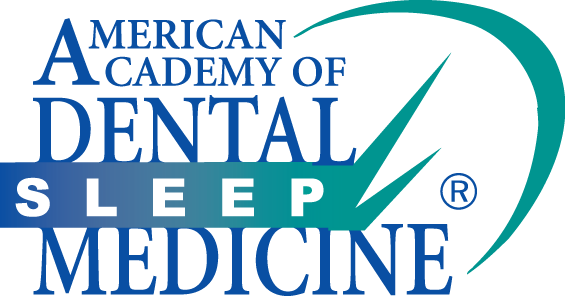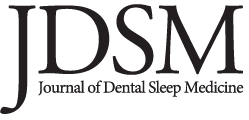
Editorial 1, Issue 12.2
Navigating the Social Media Wave: Mouth Taping and the Role of Sleep Dentistry
http://dx.doi.org/10.15331/jdsm.7380
Jean-François Masse, DMD, MSc, FACD, Diplomate, ABDSM
Editor-in-Chief Journal of Dental Sleep Medicine
Universite Laval, Quebec City, Quebec, Canada
In today’s digital age, social media platforms like TikTok have become powerful influencers in the average patient’s decision-making process. The recent surge in popularity of nighttime mouth taping shows how viral health trends can rapidly gain traction, often outpacing scientific evaluation. As dentists who treat sleep-related breathing disorders, understanding this phenomenon is crucial for providing quality care to our patients who often arrive at their appointments having pre-formed opinions based on what they have seen on social media.
The Mouth Taping Phenomenon
Nighttime mouth taping involves placing tape across the middle third of the mouth to encourage nasal breathing during sleep and has gained substantial traction on social media platforms in recent years. Following the 2020 publication of James Nestor’s “Breath: The New Science of a Lost Art,”1 this topic gained popularity on platforms such as TikTok. Various influencers like Gwyneth Paltrow and Emma Roberts have endorsed mouth taping,2 claiming benefits ranging from improved sleep quality and oral health to enhanced immune function and even cosmetic facial changes.
The scientific literature on mouth taping, however, remains limited. A comprehensive 2024 review by Fangmeyer et al. identified only nine studies that specifically evaluated mouth taping during sleep.3 While some research suggests potential benefits for obstructive sleep apnea (OSA), snoring, and preventing mouth leak during ventilation, the evidence base is sparse, with most studies having small sample sizes and significant methodological limitations.
Social Media’s Influence on Health Decisions
The impact of social media on health-related decision-making cannot be overstated. Recent research indicates that 45% of medical advice on TikTok is false or misleading, with alternative medicine content being particularly inaccurate.4 Despite this, many users, especially younger generations, turn to these platforms for health guidance. One in five Americans consults TikTok for advice before seeing their physician, this trend increases to one in three among Gen Z respondents.5,6
For qualified dentists, this trend presents both challenges and opportunities. Patients may arrive with preconceived notions about mouth taping, based on social media claims that lack scientific support. Conversely, these platforms also offer potential avenues for disseminating evidence-based information about sleep-related breathing disorders and proven interventions.
The Evidence Gap
Although TikTok has, at times, shown alignment with evidence-based information on sleep health topics such as sleep hygiene,7 when it comes to mouth taping, the disconnect between social media claims and scientific evidence is striking. TikTok videos frequently tout benefits such as improved sleep quality (36% of videos), prevention of cavities (24%), elimination of morning bad breath (22%), and reduction of dry mouth (18%). Some claim mouth taping can improve or cure sleep apnea (6%) and prevent snoring (16%).3
Current research, however, provides limited support for these assertions. Only a few studies suggest potential benefits in specific contexts:
- A 2022 study by Lee et al. found that mouth taping significantly reduced snoring index, apnea-hypopnea index (AHI), and oxygen desaturation index in 20 patients with mild OSA.8
- Another 2022 study demonstrated that combining a mandibular advancement device (MAD) with mouth taping more effectively decreased AHI than MAD alone in patients with OSA.9
- A 1999 study showed that among nine patients with sleep respiratory failure, mouth taping effectively reduced mouth leak during bilevel ventilation.10
Bridging the Gap: The Role of Sleep Dentistry
As qualified dentists, we are uniquely positioned to bridge the gap between viral social media trends and evidence-based practice. Our approach should include:- Acknowledging Social Media’s Influence
- Providing Evidence-Based Context
- Offering Safer, Evidence-Based Alternatives
- Contributing to the Conversation
We can play an active role in improving the quality of health information on social media. Research shows that it can be effective when health professionals partner with established social media influencers. A recent study demonstrated that providing mental health influencers with evidence-based content “toolkits” increased viewership of accurate mental health content by more than 800,000 views.12
Looking Forward
The mouth taping trend highlights the evolving landscape of how patients access and evaluate health information. As social media continues to shape health trends, qualified dentists must adapt their approach to patient education and communication.
By understanding and leveraging social media, we can better serve our patients in this digital age. Rather than viewing social media as an adversary to evidence-based practice, we can leverage its reach and influence to promote scientifically sound approaches to sleep-related breathing disorders.
As the research on mouth taping continues to evolve, maintaining an open yet critical stance will be essential. Our goal should be to help patients navigate the sea of information—and misinformation—to make informed decisions about their sleep health, guided by scientific evidence rather than viral trends alone.
REFERENCES
- Nestor J. Breath: The New Science of a Lost Art. Riverhead Books, 2020
- Monachino A. Mouth taping for better sleep: Gimmick or game-changer? Global News. February 15, 2025. Accessed April 8, 2025. https://globalnews.ca/the-curator/11020752/mouth-taping-better-sleep/
- Fangmeyer SK, Badger CD, Thakkar PG. Nocturnal mouth-taping and social media: A scoping review of the evidence. Am J Otolaryngol. 2025;46(1):104545.
- Lee J. Misleading medical advice on TikTok: Separating fact from fiction. The Intake. December 4, 2204. Accessed April 8, 2025. https://www.tebra.com/theintake/healthcare-reports/medical/misleading-medical-advice-on-tiktok
- The shifting role of influence and authority in the Rx drug & health supplement market. CharityRx. September 21, 2022. Accessed April 8, 2025. https://www.charityrx.com/blog/the-shifting-role-of-influence-and-authority-in-the-rx-drug-health-supplement-market/
- Kirkpatrick CE, Lawrie LL. TikTok as a source of health information and misinformation for young women in the United States: Survey study. JMIR Infodemiology. 2024;4:e54663.
- Gillis B, VanAntwerp J, Scott E, Peltz J. TikTok made me do it: An analysis of the scientific evidence supporting tiktok’s recommendations for better sleep [SLEEP abstract 1093]. Sleep. 2024;47(suppl):469
- Lee YC, Lu CT, Cheng WN, Li HY. The impact of mouth-taping in mouth-breathers with mild obstructive sleep apnea: A preliminary study. Healthcare (Basel). 2022;10(9):1755.
- Labarca G, Sands SA, Cohn V, et al. Mouth closing to improve the efficacy of mandibular advancement devices in sleep apnea. Ann Am Thorac Soc. 2022;19(7):1185-1192.
- Teschler H, Stampa J, Ragette R, Konietzko N, Berthon-Jones M. Effect of mouth leak on effectiveness of nasal bilevel ventilatory assistance and sleep architecture. Eur Respir J. 1999;14(6):1251-7.
- Cooper S, Oborne J, Harrison T, Tattersfield A. Effect of mouth taping at night on asthma control--a randomised single-blind crossover study. Respir Med. 2009;103(6):813-9.
- McKoy J. Influencing the influencers’: How TikTok can promote positive mental health. Boston University School of Public Health. April 12, 2024. Accessed April 8, 2025. https://www.bu.edu/sph/news/articles/2024/influencing-the-influencers-how-tiktok-can-promote-positive-mental-health/
CITATION
Masse, JF. Navigating the social media wave: Mouth taping and the role of sleep dentistry. J Dent Sleep Med. 2025;12(2)SUBMISSION AND CORRESPONDENCE INFORMATION
Submitted in final revised form April 8, 2025.
Address correspondence to: Jean-François Masse, DDS, MSc, FACD, D.ABDSM, Professor, Universite Laval, 2780 Masson #200, Quebec City, QC, G1P 1J6, Canada; Tel: 418871-1447; Fax: 418-871-4983; Email: jean-francois.masse@fmd.ulaval.ca
